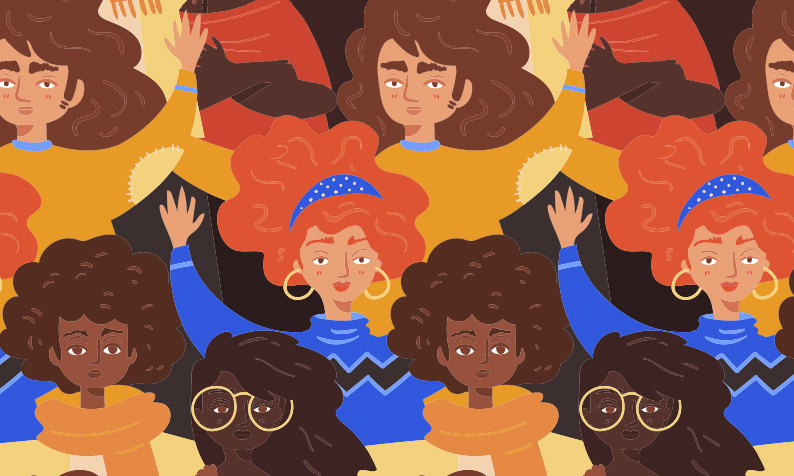
15 Jan Inclusivity in the cosmetics industry: authenticity behind the product
[vc_row][vc_column][vc_column_text]
[/vc_column_text][vc_column_text]
Inclusivity: policy & practice focused on providing equal access to opportunities and resources for people that would be excluded or marginalized.
[/vc_column_text][/vc_column][/vc_row][vc_row css=”.vc_custom_1610699285528{margin-top: 30px !important;border-top-width: 30px !important;}”][vc_column width=”2/3″][vc_column_text]
[/vc_column_text][vc_column_text]As the number of product launches with some claim of inclusivity increases everyday, this concept seems to have become the biggest trend in the beauty industry. Often, this trend is attributed to brands like Fenty Beauty (the cosmetics brand launched by Rihanna in 2017), arguing that if a brand creates products with all women in mind, this brand thrives—not only in sales (in 2017 the brand was “sold out” in the majority of the 40 shades in its foundation range)—but also in credibility & trust from its customers and followers, who see themselves represented in the brand.[/vc_column_text][/vc_column][vc_column width=”1/3″][vc_single_image image=”6234″ img_size=”500×500″ alignment=”center” onclick=”custom_link” link=”https://www.instagram.com/fentybeauty/”][/vc_column][/vc_row][vc_row][vc_column][vc_column_text]
[/vc_column_text][vc_column_text]However, inclusivity in the beauty world goes beyond the product and has a lot to do with the authenticity of the brands that are carrying out the vision. The concept of inclusivity must be reflected in all of the brand messages and ensure that all voices are heard across all races, religions, socio-economic classes, ages and genders. In a proliferation of brands pushing inclusivity, a focus on creating a vast range of makeup shades suitable for more than just young, white women is reductive. The times have changed.
Cosmetics marketing has always been interesting when we look at campaigns that, many times, have been and continue to be disconnected from reality, pursuing standard beauty ideals.
“According to a 2016 report, only 22% of models in the UK and US were of color, Asian or Hispanic, while the remaining 78% were white.” (Fleming, 2019).
Nowadays brands have been changing their way of connecting with their audiences, relying on “testimonials” that more closely represent the everyday lives of consumers and influencers, who can promote the brand and its products on their platforms. But once again, one must look at the nuances: not all influencers have the same access to the same opportunities. Often times, the same traditional means of communication and promotion are repeated.
We know that social media is a great driving force in the beauty industry, and if sometimes they forgive, they hardly forget. Unfortunately, there are too many brands that preach inclusivity but have significantly ignored women of color, which can be seen very simply, for example, by scrolling through a brand’s feed.
“Beauty brands had posted more images with models of color during the Black Lives Matter protests and then immediately returned to normal posting models with lighter skin.” (Source: www.fastcompany.com).
[/vc_column_text][/vc_column][/vc_row][vc_row css=”.vc_custom_1610699066135{margin-top: 20px !important;border-top-width: 20px !important;}”][vc_column width=”1/2″][vc_single_image image=”6244″ img_size=”776×633″ alignment=”center” onclick=”custom_link” img_link_target=”_blank” link=”https://www.instagram.com/fentybeauty/”][/vc_column][vc_column width=”1/2″][vc_column_text]
When we look at a brand like Fenty Beauty we see it completely inspired by women and men of all races, sizes, forms, creeds, and its social media is a total reflection of this.[/vc_column_text][/vc_column][/vc_row][vc_row css=”.vc_custom_1604335904257{border-top-width: 10px !important;}”][vc_column css=”.vc_custom_1604335936592{border-top-width: 20px !important;}”][vc_column_text css=”.vc_custom_1611219758580{padding-top: 20px !important;}”]Many brands claim to include and champion people of color, yet without having any diversity on their brand teams. A brand cannot authentically connect with its audience if it does not have any structural representation of the consumers it is targeting. It seems even too basic not to think that representatives of an “exclusion” are needed to turn the problem around, but when it comes to practice that is what happens. Consider, for example, the role of women in a predominantly female industry such as the cosmetics industry, and the cost that this shift has had and continues to have toward inclusiveness.
When brand messages are not aligned with the people making decisions behind the scenes, it shows.
We’re going to be glad and excited anytime we see a range of makeup with shades for everyone, a product created to care for ethnic hair or a “no gender” skincare line, but we can’t forget that this is not inclusivity—it’s merely one aspect of it.
Inclusivity is how a brand values representation and diversity at every level of its business, authentically.
Finally, inclusivity, like sustainability, plays a key role in the future of the global beauty industry.
Contact The Beauty Makers to boost your brand!
[/vc_column_text][/vc_column][/vc_row]


